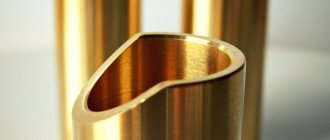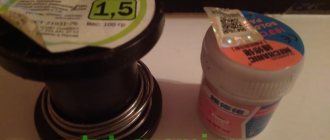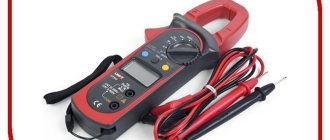GOI paste is one of the most popular means for polishing products made of various materials in our country. It is produced in the form of a green bar, similar to a soap bar, or in jars. It is worth noting that initially GOI paste was developed directly for grinding metal surfaces. But over time, its use spread to other areas of human activity. The product received its name in honor of the State Optical Institute, the enterprise where it was first obtained.
Classification and composition
The main compound in the GOI paste formula is chromium oxide. Its concentration affects the granularity of the substance and, accordingly, the performance characteristics. The higher the percentage of chromium oxide in the GOI paste, the rougher it is (varies from 60% to 85%). Depending on the grain size, there are several varieties, each of which is assigned an individual number:
- No. 1 - fine for final polishing and giving a mirror shine;
- No. 2 - thin to achieve a uniform matte surface;
- No. 3 - medium for removing small irregularities;
- No. 4 - rough to remove visible scratches.
Types of paste differ in composition, structure and color (from light green for fine to black and dark green for coarse).
In addition to chromium oxide, GOI paste contains fatty binding compounds, as well as activating components in the form of various solvents, adsorbents and other reagents, for example, silica gel, kerosene, stearin, bicarbonate of soda.
What materials can be polished with GOI paste?
The main purpose of GOI paste is the processing of metal products (stainless steel, cast iron, silver, aluminum, etc.), but it can also be used for polishing other surfaces: glass, plastics, ceramics, hard polymers. It is worth noting that this product has found wide application both in industry and in everyday life.
In everyday life, GOI paste is used for polishing kitchen knives, scissors or other products made of steel alloys. It is very popular among numismatists, who use it to remove corrosion from ancient coins and restore their shine. Fishermen use GOI paste to clean artificial fishing baits, increasing their specularity. Hunters use a mixture of this product to polish gun barrels.
5 ways to tidy up your sofa yourself
GOI paste is also used for polishing mirror, plastic and glass surfaces (including plexiglass). This technical tool can partially restore CDs, mobile phone screens, watches, jewelry, etc. GOI paste perfectly removes scratches and chips on car headlights, and also effectively removes their cloudiness and blackening.
Thus, GOI paste is the most important tool in metalworking, as well as in fine, high-quality polishing of various surfaces without the use of special equipment.
Alternative remedies
The main competitors are diamond pastes and aluminum oxide pastes. They also vary in color according to their abrasive properties:
- Gray and red materials are used for grinding and rough polishing of metals. Some samples are capable of removing even deep risks.
- Pink ones are analogues of GOI paste No. 3. They remove traces of mechanical processing and create a shiny surface.
- White and turquoise compositions are intended for finishing and working with delicate surfaces.
Polishes are produced both in Russia and abroad: Gtool, Dialux, Rupes, Depural, Peek, Actuel. Foreign analogues are usually more expensive, but more effective and easier to use. They have lower consumption. Available in the form of bars, liquid mass or powder.
How to use?
Apply GOI paste to the surface using a special polishing wheel or a soft cloth moistened with a solvent, for example, a rag or gauze. It should be remembered that the wetter the rag material, the longer the processing, but the better the result of the work done. It is possible to use kerosene, diesel fuel or other hard-to-evaporate, non-aggressive liquid as a solvent.
Polishing a product with GOI paste includes the following steps:
- Apply GOI paste to the rag material. It is strictly forbidden to add the product to the polished surface, as this may lead to the formation of new damage.
- Before grinding, to crush large particles, it is recommended to rub the product on a metal surface.
- To speed up the process, lightly treat the polished surface with liquid industrial oil.
- To avoid new scratches, polish with GOI paste without sudden movements or strong pressure. During the procedure, it is sometimes necessary to wipe the surface of the workpiece dry to control the quality of grinding.
- Upon completion of work, thoroughly rinse the product in solvent; if this is not possible, remove all signs of GOI paste from the surface with water.
Features of polishing products made from various materials
It is important to note that products made from various materials require a certain polishing technology with GOI paste. First of all, it is necessary to select the type of technical means and fabric with which the surface will be treated. After this, in order to get the maximum result and prevent the formation of new damage, you should decide on the polishing process,
- For polishing glass and plastic, it is recommended to choose GOI No2 paste and a soft-pile cloth, such as cotton or flannel. In this case, the product must be generously rubbed onto a piece of rag material, and the surface of the product must be cleaned of debris and dust. After the preparatory work, you can begin polishing the surface. To do this, it is necessary to grind the product for several minutes without brute force, applying light pressure. It is worth noting that when processing the screen of a mobile phone or watch, you must carefully use solvents and oil so that they do not penetrate inside the case.
- Silver jewelry tends to lose its original shine over time. Correct use of GOI paste No. 3 will help restore the appearance of products. As a processing fabric, you should choose a material with a more rigid structure, for example, a tarpaulin or felt circle, or a piece of felt boots. After applying GOI paste to the fabric, you must thoroughly rub the product against it, completely covering the darkened surface. The final step is to polish the jewelry with a softer cloth until the final shine is obtained. To achieve the greatest effect, before starting polishing, it is recommended to boil silver products in a solution mixed from: 300 ml of water; 2 teaspoons of an aqueous solution of ammonium hydroxide; 50 g grated soap; 50 g washing powder.
- To polish knives or scissors, GOI paste is applied to a wooden block. You can also glue sandpaper to the board and rub it with this technical product, slightly moistened with a solvent. Then the steel alloy products should be ground against a block using a reciprocating motion at different angles.
5 tips on how to properly clean fur products
GOI pasta - everything you didn’t know
Even people far from plumbing and other work have heard about GOI paste. It seems like you can use it to polish and grind metal, plastic and even glass. Let's figure out what can be done with it, how to use it correctly, consider the gradation of paste grain size and approximate prices in stores.
It was invented in the thirties and to this day is one of the best pastes for polishing metal products. I won’t list the ingredients for you, because all this can be found on the internet, but I’ll just say that it’s made on the basis of chromium. Among other things, it is used when sharpening knives for fine polishing after whetstones.
Sold in different containers, from small 30 gram jars to massive cylinders weighing a kilogram or more.
But what many people don’t know is that pasta comes in different grain sizes. For many, it's just a green paste used to polish metal. However, the polishing process requires that the abrasive (which it is) be of different “coarseness”, because it is used not only at home. Coarse grit may scratch the surface, while fine grit will not be able to remove deep scratches.
Therefore, pasta comes in 4 grains:
- No. 1 very fine, used for polishing and giving the perfect shine
- No. 2 is not much different from number one
- No. 3 medium grit removes all unnecessary material on the metal, leaving the metal with a matte finish that can be brought to a perfect mirror shine using finer grits.
- No. 4 is the largest paste, it can even remove shallow scratches on metal.
General questions are well reflected in the video:
How to use GOI paste.
There are a huge number of different instructions on the Internet, which reflect all sorts of nuances such as movements when polishing, what rags to use, etc. I will indicate the main points that are worth paying attention to.
- How to dilute GOI paste. As you know and have seen, paste is a rather dense and hard mass. How to apply it, for example, on a regular rag to polish a spinner or something else? Therefore, it needs to be liquefied; for this, ordinary machine oil is used. Break off a small piece, add a few drops of oil, stir until smooth. Now you can apply GOI to a cloth and polish whatever you wanted there.
- The second application method is suitable for grinding and straightening knives or cutters. Take a wooden block/board and rub it with paste until there is enough abrasive on the wood to work the metal. Then simply straighten the knives by moving the knife back and forth along the block, maintaining a certain angle of inclination.
- When polishing on emery, felt wheels are used; apply the paste to them as well, diluting it a little with oil.
- Now about materials for polishing - about rags. If you are polishing a plastic surface, use the softest cloth - cotton or flannel. To polish metal, you can use a coarser fabric - jeans, tarpaulin, or the same felt circle. Think about old felt boots - an excellent material for polishing metal using GOI paste.
Another note: Don’t know what to use for reinforced concrete?
Of course, Distar Turbo Extra. In terms of cost, small jars cost 20-30 rubles, a kilogram bar costs 200 rubles.
What products cannot be polished with GOI paste?
It is worth remembering that polishing products made from some materials with GOI paste may be ineffective or even cause damage to the appearance. It is not recommended to process with this technical means:
- gold-plated products (the outer layer can be erased);
- steel, except for knives and scissors, and nickel (as a rule, they are not polished by hand, but with a special tool);
- metal watches (can be polished with the mechanism removed);
- sapphire watch crystals (grinding with GOI paste is ineffective).
How to use GOI paste
Each package comes with instructions that describe in detail the composition of the GOI paste, the rules for use in direct contact with certain hard surfaces to eliminate defects. Before starting use, you need to decide which paste will be relevant in a particular case. Several practical options predominate on free sale, among them the following numbers:
- No. 4. For rough processing.
- No. 3. To provide a matte surface without streaks.
- No. 2 and 1. To ensure glossy surfaces.
The procedure itself is not complicated, the main thing is to strictly follow the general recommendations and not damage the surface being treated. Polishing with GOI paste can be carried out in the following sequence:
- To avoid scratches on the surface being treated, you must first find a piece of cloth, such as flannel, and soak it in gasoline.
- Apply a small amount of paste to a rag, then wipe it on an unnecessary metal object to break up large crystals of the GOI composition.
- Rub the object with gentle movements until its body begins to shine. This cleaning takes a few minutes, but it is important to beware of large particles of Goya composition and scratches.
- After completing the session, you need to additionally treat the surface with gasoline or dip the polished object in kerosene.
For metal
Before polishing with GOI paste, it is important to decide on the type of metal. For example, there is often a need for high-quality cleaning of silver cutlery - forks, knives, spoons (over time they darken and turn green). In this case, it is important not to spoil the surface of the noble metal with small scratches, but to act in the sequence given below:
- Wash silver cutlery.
- Rub with a toothbrush and powder until shiny.
- Separately, pour water into a glass, add a little ammonia, soap, powder.
- Boil cutlery in this composition.
- Then proceed to metal processing with GOI composition.
If we talk about other metal bases and products, it is worth emphasizing that steel items are cleaned using a special device, and it is better to completely abandon cleaning gold in this way. This is explained by the fact that the top layer of this precious metal can be erased. When polishing a metal watch with paste, it is important to first remove the watch mechanism.
- Tatyana Arntgolts, films with her participation. Roles of Tatyana Arntgolts
- How to get rid of mosquitoes in an apartment
- How to pluck eyebrows with thread
For glass
For example, you may need to polish the display of a mobile phone or any other gadget. In this case, you definitely can’t do without this miraculous paste. When working with glass surfaces, it is recommended to use GOI composition No. 2, and additionally use a soft flannel rag. The cleaning process is available at home, the sequence of actions is as follows:
- Take a piece of rag and rub it thoroughly with a bar of technical product so that a layer of paste remains.
- After this, you can begin high-quality grinding of the glass, but do not put too much pressure on the fragile product.
- Without much effort, in just a few minutes the glass surface will be polished to a shine.
For plastic
For plastics, it is also recommended to use the GOI composition No. 2 with a viscous or solid consistency. Take a rag again and rub it with a bar or apply a thin layer of a gel-like paste. In the latter case, before proceeding with more intensive sanding of the plastic, it is important to rub any metal surface (to avoid scratches on the plastic). Then use the technical tool for its intended purpose in the same way as the examples described above.
Harmful to humans?
Concerns are often raised that the chromium oxide contained in GOI paste is toxic. These judgments are justified, since a given compound, depending on its valency, can exhibit different properties. Hexavalent chromium oxide is toxic and hazardous to human health. Meanwhile, in the production of GOI paste, a non-toxic trivalent compound that has passed examination is used.
At the same time, excluding the harmfulness of GOI paste to human health, it is recommended to use protective glasses and a mask when using it. This is due to the fact that when polishing products, dust is generated, which can cause irritation of the mucous membranes.











